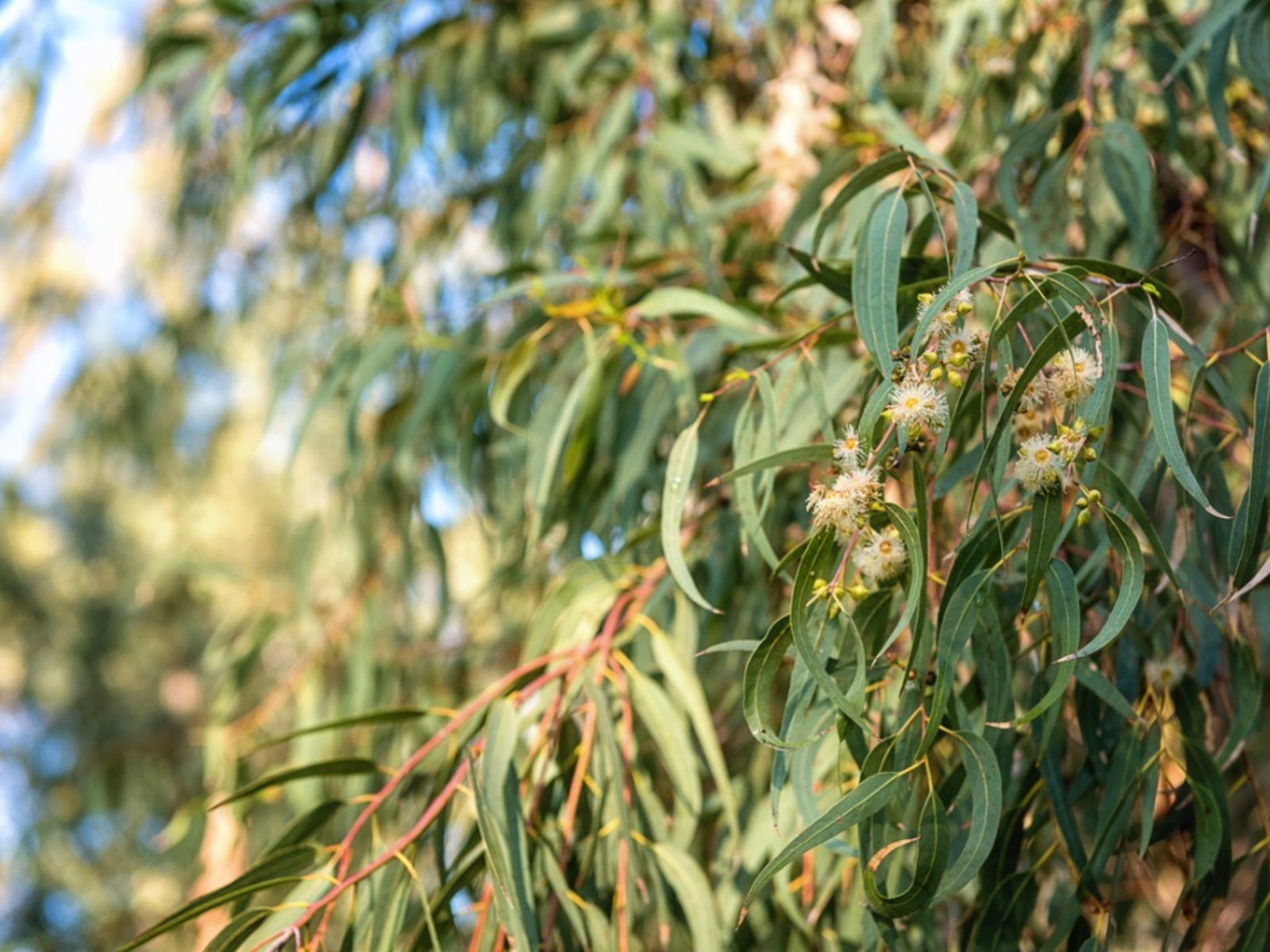Eucalyptus Tree Care - Tips On Growing Eucalyptus


Eucalyptus is a tree most often associated with its native Australia environment and fun-loving koalas feasting on its branches. There are many species of eucalyptus trees, including popular varieties like Gum tree and Silver-Dollar tree, that can be grown in the home landscape. In fact, this tree can make an attractive addition with interesting bark and foliage, beautiful flowers, and nice fragrance. They do especially well in areas that mimic their native environment. Most of these trees are rapid growers, reaching heights of about 30 to 180 feet (9-55 m.) or more, depending on the variety, with approximately 60 percent of their growth established within the first ten years.
Tips on Growing Eucalyptus Trees
All eucalyptus trees require full sun, however, some species, like E. neglecta and E. crenulata, will tolerate areas with semi-shade. They also adapt well to a wide range of soils, from hot, dry sites to slightly wet as long as the area is well draining. Plant eucalyptus in mid to late spring or fall, depending on your location and climate. Be sure to water the tree both before and after planting. Dig the hole slightly larger than the root ball, and take care with the tree's roots during planting, as they do not like being disturbed. There's no need to spread out the roots while planting, as this could damage their sensitive root system. Back fill the area and lightly tamp the soil to remove any air pockets. According to most eucalyptus tree information, many species respond well to potted environments as well. Ideal candidates for containers include:
- E. coccifera
- E. vernicosa
- E. parviflora
- E. archeri
- E. nicholii
- E. crenulata
Containers should be large enough to accommodate the tree, about 2 feet (61 cm.) in diameter, and allow for adequate drainage. Eucalyptus trees cannot take temperatures below 50 degrees F. (10 C.) for extended periods, therefore, it's recommended that they be grown indoors in cold climates, spending summers outside whenever warm enough. Other areas can either overwinter them indoors or provide suitable winter protection.
How to Care for a Eucalyptus Tree
Eucalyptus tree care is not difficult, as this type of tree usually maintains itself reasonably well. Once established, eucalyptus trees should not require too much watering, with exception for those growing in containers. Allow these to dry out somewhat between waterings. Additional watering may be necessary during periods of excessive drought, however. As for fertilizer, much of the eucalyptus tree information recommends against the use of fertilizer, as they do not appreciate phosphorus. Potted eucalyptus may require an occasional slow-release fertilizer (low in phosphorus). In addition, eucalyptus tree care includes annual pruning (in summer) to control top growth and their overall height. Eucalyptus trees are also known to produce heavy litter in the fall, shedding bark, leaves, and branches. As its shred-like bark is considered flammable, keeping this debris cleaned up is preferable. If desired, you can collect some seed once it falls, and then plant it in another area of your yard or in a container.
Sign up for the Gardening Know How newsletter today and receive a free copy of our e-book "How to Grow Delicious Tomatoes".

Nikki Tilley has been gardening for nearly three decades. The former Senior Editor and Archivist of Gardening Know How, Nikki has also authored six gardening books.